If you’re like most people, you enjoy spending time in your garden during the warm summer months. But if you’ve ever come into contact with poison ivy, you know how irritating it can be. Not only is it itchy and uncomfortable, but it can also be quite dangerous. This blog post will discuss how to clean garden tools from poison ivy so that you can safely continue enjoying your garden!
All About Poison Ivy
Poison ivy is a shrub or vine that grows in many parts of the world, including North America. It belongs to the family Anacardiaceae, which also includes cashews and mangoes. This plant produces an oil called urushiol, which can cause an allergic reaction when it comes into contact with the skin. Symptoms usually include redness, swelling, itching, and blistering. In severe cases, poison ivy rash can spread over large areas of the body and become very uncomfortable.
If you come across poison ivy, it’s important to avoid contact with it as much as possible. Wear long-sleeved shirts and pants when walking through wooded areas, and always keep an eye out for the plant’s distinctive leaves. If you think you may have been exposed to poison ivy, wash the affected area with soap and water as soon as possible to help limit the spread of urushiol oil. Over-the-counter antihistamines can also be used to treat itching, while topical steroid creams may be prescribed by a doctor for more severe cases. In very rare instances, a person may experience anaphylactic shock after contact with poison ivy, so it’s important to seek medical attention right away if this occurs [1].
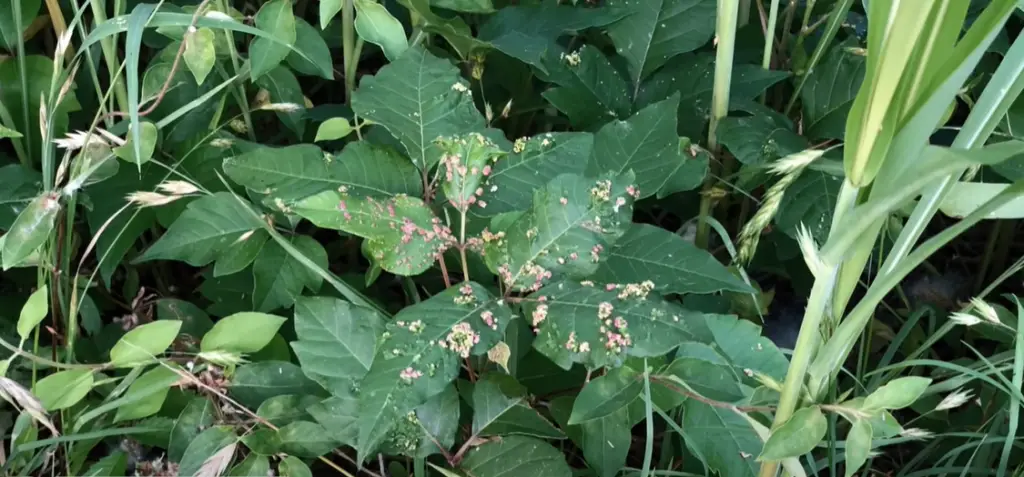
How can garden tools be poisoned with poison ivy?
Garden tools can become contaminated with poison ivy oil if they are used to come into contact with the plant. This could occur when cutting, trimming, or digging around plants that contain poison ivy. If you are using garden tools in areas where poison ivy is known to exist, it is important to take preventative steps such as wearing protective clothing and gloves and cleaning the tools after use. It’s also important to keep an eye out for signs of possible contamination, such as redness or itching on exposed skin.
If you suspect your tools have been contaminated, wash them immediately with soap and water before storing them away from other items or people who might be affected by the oil. Finally, always make sure to store your garden tools in a clean and dry area, away from other potentially contaminated items. Doing so can help protect you and your family from the harmful effects of poison ivy oil.
In conclusion, garden tools have the potential to become contaminated with poison ivy oil if they are used in areas where it is present. If you suspect this has happened, it’s important to take action immediately by washing the tools thoroughly and storing them away from other people or items that could be affected by the oil. Taking these steps can help ensure your safety and the safety of those around you.
Methods to Clean Poison Ivy Off of Tools
Warm Water and Detergents
One of the most effective ways to clean poison ivy off of tools is by using a strong detergent in warm water. This method helps remove the oils from the leaves that cause the rash and irritation. You will need to make sure you use gloves when handling any tools or materials that have been exposed to poison ivy so that you don’t get a reaction. Begin by soaking the tools in a bucket filled with warm water and detergent for at least 10 minutes. Once you’ve done this, scrub down all surfaces with an old toothbrush or other bristled brush. Afterward, rinse the tools off thoroughly and dry them completely before storing or reusing them.
Vinegar and Baking Soda
Another way to clean off poison ivy from tools is to mix equal parts of vinegar and baking soda in a bowl. Use an old toothbrush or other bristled brush to rub the mixture into any surfaces that have been exposed to poison ivy. Once you’ve done this, rinse the tools thoroughly with warm water and dry them completely before storing or reusing them.
Bleach Solution
Using bleach is another effective way to clean poison ivy off of tools. To do this, fill a bucket with one gallon of water and ¼ cup of chlorine bleach and mix them. Place your tools in the solution for 10 minutes and then scrub down all surfaces with an old toothbrush or other bristled brush. Be sure to wear gloves during this process to avoid any contact with the bleach solution. Afterward, rinse the tools off thoroughly and dry them completely before storing or reusing them.
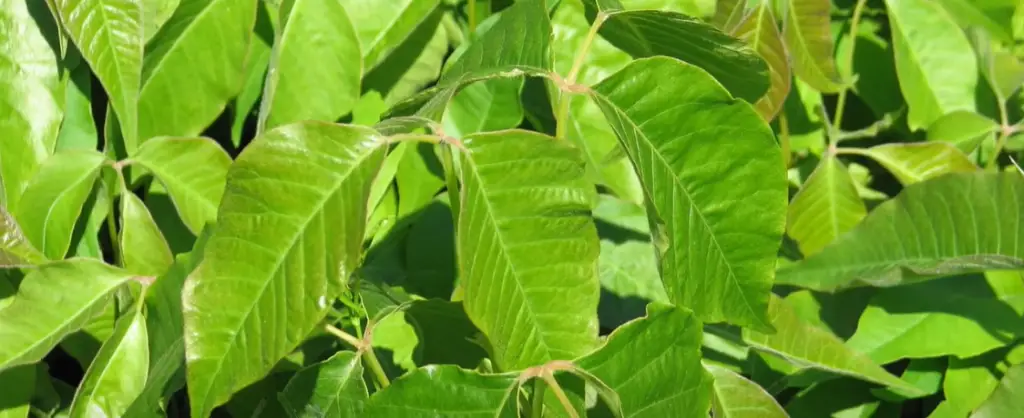
Use Isopropyl Alcohol
Isopropyl alcohol is an effective way to clean poison ivy off of tools. Begin by pouring some of the alcohol onto a cloth and wipe down all surfaces that have been exposed to poison ivy. Use gloves during this process so that you don’t get a reaction. Once you’ve done this, rinse the tools thoroughly with warm water and dry them completely before storing or reusing them [2].
How to Clean Poison Ivy Off Tools?
Step 1: Prepare a Cleaning Solution
To clean poison ivy off tools, you will need to prepare a cleaning solution. Start by filling a bucket with hot water and add 1 cup of bleach for every gallon of water used. You can also use rubbing alcohol or vinegar instead of bleach if you prefer.
Step 2: Put on Protection
Before you begin cleaning, it is important to wear protective clothing such as gloves and a long-sleeved shirt. This will help protect your skin from any residual toxins on the tools. Additionally, make sure you are working in a well-ventilated area.
Step 3: Soak the Tools
Once you have your cleaning solution ready, submerge the affected tools in it and let them soak for at least 30 minutes. This will help loosen any remaining residue from the plants’ oils and make it easier to scrub off later on.
Step 4: Scrub Off Residue
After soaking, take each tool out one by one and start scrubbing away any remaining residue with an old toothbrush or stiff-bristled brush. Make sure to wear gloves during this process as the oils from poison ivy can still cause irritation even after being diluted in water.
Step 5: Rinse and Dry
Once all of the residues have been scrubbed off, rinse each tool thoroughly with clean water and let them dry completely before storing them away. This will help prevent any further contamination from occurring in the future.
Step 6: Wipe Tools with Isopropyl Alcohol
In addition to rinsing and drying the tools, you should also wipe them down with isopropyl alcohol or a bleach solution. This will help kill any remaining bacteria or toxins that may have been left behind during the cleaning process.
Step 7: Apply Linseed Oil
Finally, you should apply a light coating of linseed oil to the tools. This will help protect them from rust and corrosion in the future.
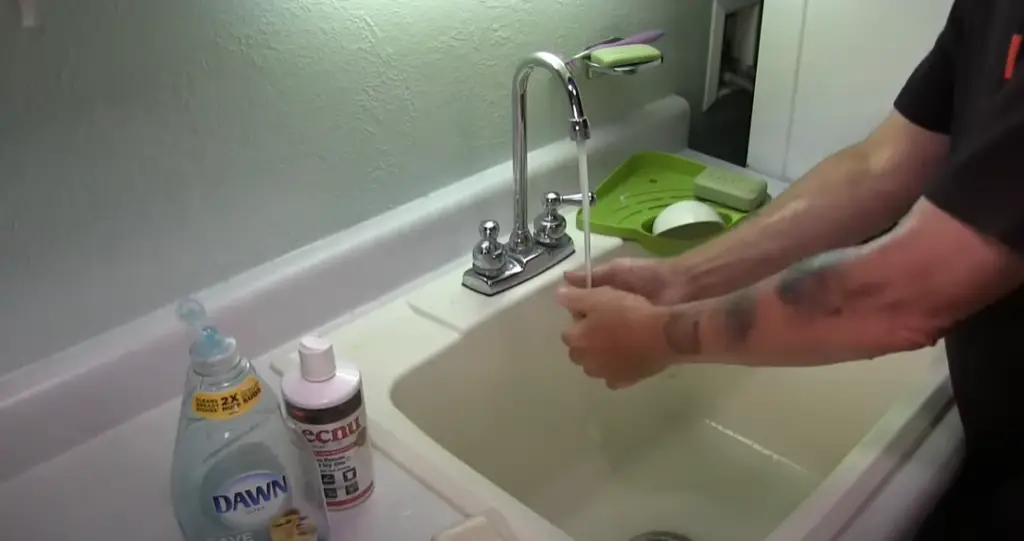
Step 8: Wash Your Protective Gear
After you have finished cleaning the tools, make sure to immediately wash your protective gear with hot water and soap. This will help get rid of any residue that may be present on it from the poison ivy.
Using these simple steps, you can easily keep your tools free of poison ivy and other harmful plants. Just remember to take precautions when handling these plants to avoid coming into contact with their oils. Be sure to use protective gear such as gloves and long sleeves when working around areas with poisonous plants, and always clean your tools thoroughly afterward. Doing so will help keep you safe and reduce the risk of any future contamination [3].
What to Do If it’s on Your Skin?
When you first notice the rash, take a few simple steps to help ease any uncomfortable symptoms.
- Wash your skin with gentle soap and water.
- Apply cool compresses or calamine lotion to relieve itching.
- Wear loose clothing made of natural fibers, such as cotton, to keep air circulating through the affected area.
- Take an over-the-counter antihistamine such as diphenhydramine (Benadryl) to reduce itching and inflammation.
- Avoid scratching the rash and avoid using topical steroids or other creams unless prescribed by a doctor.
- If possible, try to identify what might be causing the rash so that you can avoid it in the future.
Allergens such as detergents, fabrics, or plants can cause a rash. If you have an extreme reaction to something and develop hives or swelling in addition to the rash, contact your doctor or go to the emergency room. Anaphylaxis is a medical emergency that requires immediate treatment. When you visit the doctor for your rash, they may take skin samples or blood tests to determine if it’s caused by an allergy or other condition. Treatment will depend on what caused the rash and may include prescription medications, topical ointments, oral steroids, and light therapy. It’s important to remember that rashes can be very uncomfortable and even painful in some cases [4].
FAQ
Does poison ivy stick to objects?
Yes, poison ivy can stick to objects such as clothing, shoes, pets, and tools. It is important to be careful when coming into contact with items that may have been exposed to poison ivy so that the oils from the plant do not spread onto your skin. Washing any objects or clothes that may have been exposed is a good way to prevent any further spread of the oils.
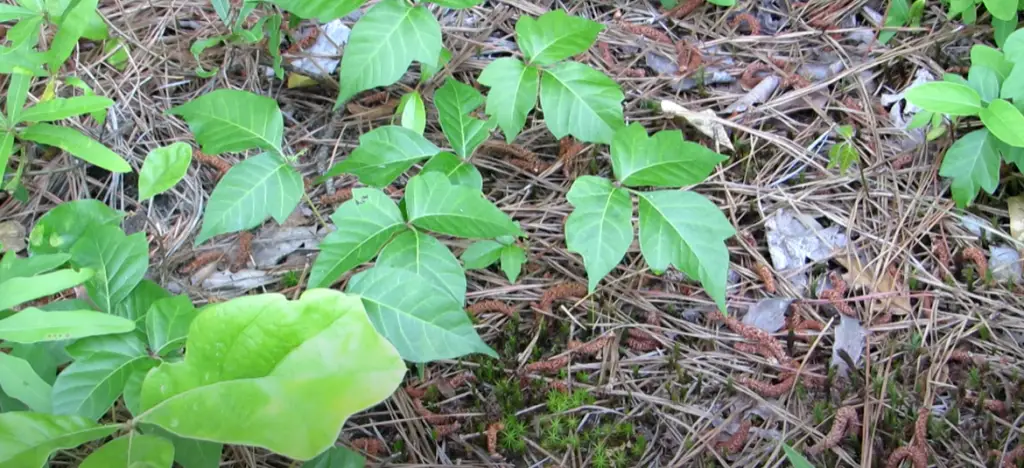
How long does poison ivy oil stay on tools?
The duration of oil from poison ivy staying on tools depends on factors such as the type of tool, material, and environmental conditions. Generally speaking, the oil can remain active for up to 5 years if not properly cleaned off. It’s important to thoroughly clean any gardening or outdoor tools used in areas where poison ivy may be present to minimize exposure. Additionally, it is recommended to wear protective gloves when handling these tools to reduce possible skin contact with the oil. Finally, storing garden tools indoors when not in use will also help reduce the chances of coming into contact with the oil.
What are some home remedies for treating a poison ivy rash?
Several home remedies can be used to treat a poison ivy rash. Taking an antihistamine such as Benadryl or Claritin can help reduce itching and swelling. Applying a cool compress to the affected area can also provide relief from itching and burning sensations. Aloe vera gel, calamine lotion, or over-the-counter hydrocortisone cream can also be used to reduce inflammation and redness. Finally, taking an oatmeal bath will help soothe the itchy skin caused by the rash.
What are some ways to prevent contact with poison ivy?
To avoid contact with poison ivy, wearing protective clothing when outdoors is recommended. This includes long pants, long sleeves, and gloves if possible. Learning how to recognize poison ivy plants is also beneficial in avoiding exposure as these plants tend to grow in wooded areas or along roadsides. If traveling through an area where poison ivy may be present, keeping to the middle of trails and paths can help reduce the risk. Additionally, it is important to thoroughly wash any clothing that has been exposed to the plant or its oils.
Are there other plants similar to poison ivy?
Yes, several plants have a similar appearance and effects as poison ivy. These include Poison oak (Toxicodendron diversilobum) which grows in western North America, and Poison Sumac (Toxicodendron vernix) found primarily in wetlands of the eastern United States. Additionally, several plants such as English ivy (Hedera helix) and Virginia creeper (Parthenocissus quinquefolia) may look similar to poison ivy but typically do not cause the same type of reaction in humans. It is important to be aware of these plants when outdoors, as they can still cause an uncomfortable rash if touched.
Useful Video: How to Clean Poison Ivy Off of Tools
Conclusion
Cleaning garden tools of poison ivy is an essential step in preventing the spread of poison ivy. Depending on how severe your infestation is, there are a few steps you can take to ensure that the poison ivy doesn’t spread further. First, clean all garden tools and equipment with soapy water and then disinfect them with rubbing alcohol or bleach. Secondly, wear protective clothing when working around areas where poison ivy could be present, such as long sleeves, protective gloves, and boots. Finally, if you have been exposed to poison ivy plants or oil from them, make sure to wash it off immediately with soap and water. Following these steps will help keep you safe from the irritating effects of poison ivy while gardening this season!
References:
- https://www.mayoclinic.org/diseases-conditions/poison-ivy/symptoms-causes/syc-20376485
- https://thepracticalplanter.com/how-to-clean-poison-ivy-off-tools/
- https://www.hunker.com/12572326/how-to-clean-poison-ivy-off-of-tools
- https://www.healthline.com/health/outdoor-health/poison-ivy-pictures-remedies#treatment





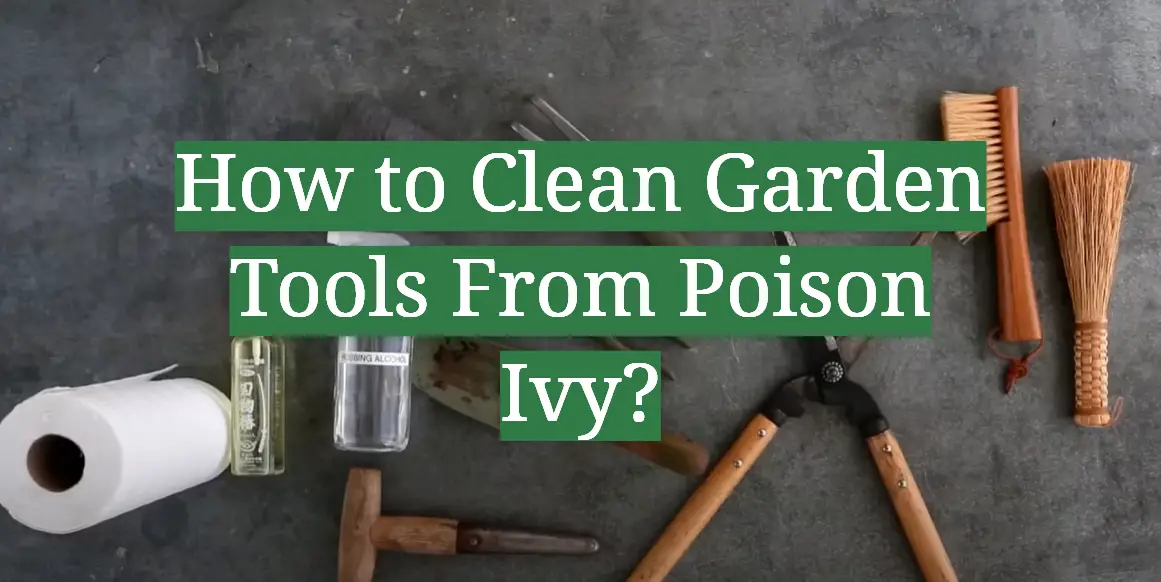
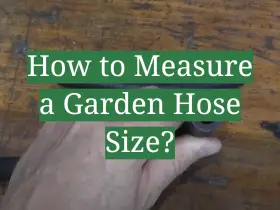
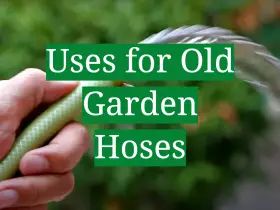
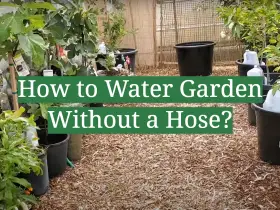

Leave a Reply
View Comments